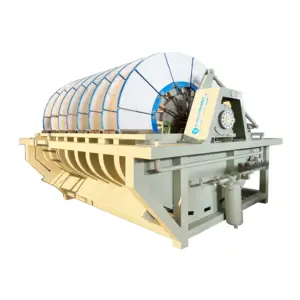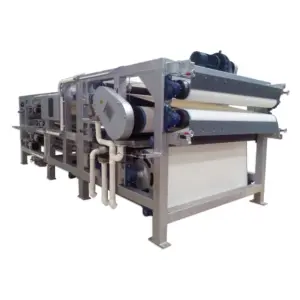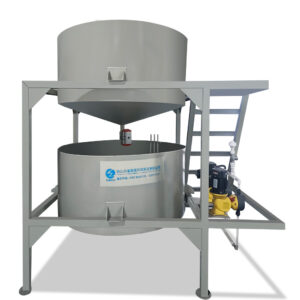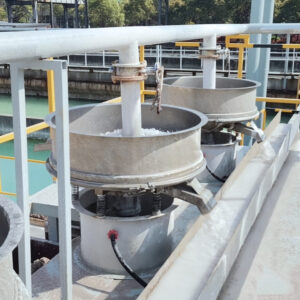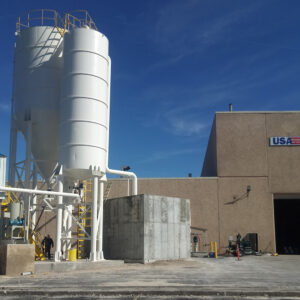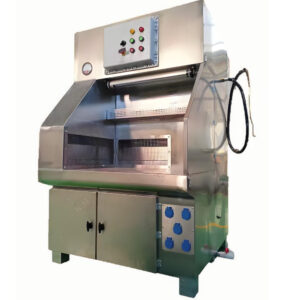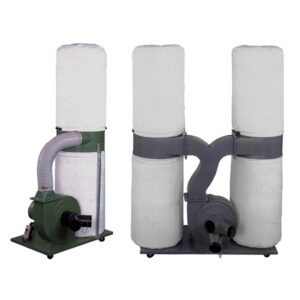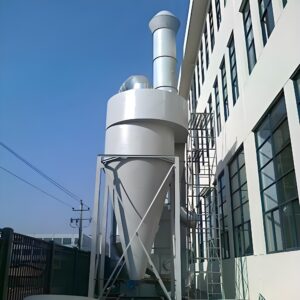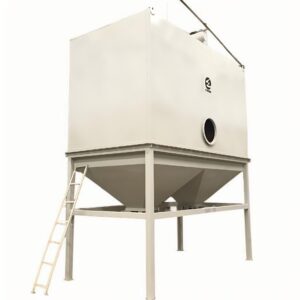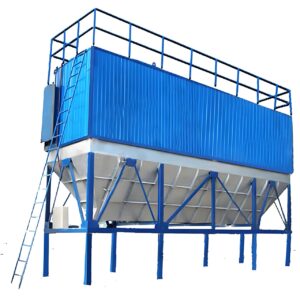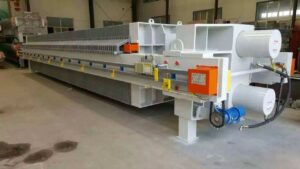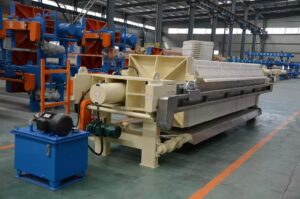Industrial dosing systems play a crucial role in various industries, from water treatment to chemical processing. As we look ahead to 2025, understanding the costs associated with these systems becomes increasingly important for businesses planning their budgets and investments. This comprehensive guide will delve into the factors influencing industrial dosing system costs, provide insights into current pricing trends, and offer projections for the coming years.
The landscape of industrial dosing systems is evolving rapidly, with advancements in technology and increasing demands for precision and efficiency. As we approach 2025, several key factors are expected to shape the pricing of these systems. These include the integration of smart technologies, enhanced automation capabilities, and a growing focus on sustainability. Additionally, the global economic climate and supply chain dynamics will likely play significant roles in determining costs.
As we explore the intricacies of industrial dosing system costs, it's essential to consider not only the initial investment but also the long-term operational expenses and potential return on investment. This guide aims to provide a holistic view of the financial aspects of implementing and maintaining industrial dosing systems, helping decision-makers make informed choices that align with their business objectives and budgetary constraints.
Industrial dosing system costs in 2025 are projected to range from $5,000 to $50,000 for basic to mid-range systems, with high-end, fully automated systems potentially exceeding $100,000. Factors such as system complexity, capacity, and integration capabilities will significantly influence pricing.
What are the primary factors influencing industrial dosing system costs in 2025?
The cost of industrial dosing systems in 2025 will be influenced by a multitude of factors, each playing a significant role in determining the overall price point. Understanding these factors is crucial for businesses looking to invest in or upgrade their dosing systems.
Key factors include the system's capacity, level of automation, precision requirements, and integration capabilities with existing infrastructure. Additionally, the type of chemicals being dosed, the materials used in construction, and compliance with industry-specific regulations will all contribute to the final cost.
The complexity of the dosing system and its ability to handle multiple chemicals simultaneously can increase costs by 30-50% compared to single-chemical systems.
Here's a breakdown of the primary cost factors:
| Factor | Impact on Cost |
|---|---|
| Capacity | 20-40% |
| Automation Level | 15-35% |
| Precision | 10-25% |
| Integration Capabilities | 5-15% |
| Materials | 10-20% |
| Compliance | 5-10% |
The interplay between these factors creates a wide range of potential costs for industrial dosing systems. As technology continues to advance, we can expect to see more sophisticated systems entering the market, potentially driving up costs for high-end solutions while also introducing more cost-effective options for basic applications.
How does system capacity affect industrial dosing system pricing?
System capacity is one of the most significant factors in determining the cost of an industrial dosing system. The capacity refers to the volume of chemicals the system can accurately dose over a given period, and it directly correlates with the size and complexity of the equipment required.
In 2025, we anticipate seeing a wider range of capacity options to cater to diverse industrial needs. From small-scale operations requiring minimal dosing to large industrial plants with high-volume demands, the capacity requirements will significantly impact the overall system cost.
Industrial dosing systems with capacities exceeding 1000 liters per hour are expected to cost 40-60% more than systems with capacities under 100 liters per hour in 2025.
The relationship between capacity and cost is not always linear. While larger systems generally cost more, there can be economies of scale for very high-capacity systems. Here's a simplified breakdown of how capacity might affect pricing:
| Capacity (L/hr) | Relative Cost |
|---|---|
| 0-100 | Base Price |
| 101-500 | 1.5-2x Base Price |
| 501-1000 | 2-3x Base Price |
| 1000+ | 3-5x Base Price |
When considering capacity, it's essential to factor in not just current needs but also potential future requirements. Investing in a system with slightly higher capacity than immediately necessary can provide room for growth and potentially save on upgrade costs in the future. However, oversizing a system can lead to unnecessary expenses and reduced efficiency, so careful planning is crucial.
What role does automation play in the cost of industrial dosing systems?
Automation is becoming increasingly central to industrial dosing systems, and its impact on costs is significant. As we approach 2025, the level of automation in these systems is expected to be a major differentiator in pricing. PORVOO is at the forefront of developing automated dosing solutions that offer precision and efficiency.
The spectrum of automation ranges from basic systems with minimal automated features to fully autonomous systems capable of self-adjustment and remote operation. The more advanced the automation, the higher the initial cost, but this often translates to lower operational costs and improved efficiency over time.
Fully automated industrial dosing systems with AI-driven optimization capabilities are projected to cost 50-100% more than their manual counterparts in 2025, but can reduce operational costs by up to 30% annually.
Key automation features affecting cost include:
| Automation Feature | Cost Impact |
|---|---|
| Basic PLC Control | +10-20% |
| Remote Monitoring | +15-25% |
| Self-Calibration | +20-30% |
| AI-Driven Optimization | +40-60% |
| Full Integration with Plant Systems | +50-80% |
The decision to invest in a more automated system should be based on a careful analysis of long-term benefits versus initial costs. While the upfront investment for highly automated systems is higher, the potential for increased accuracy, reduced human error, and lower operational costs can lead to significant savings over the system's lifetime.
How do precision requirements impact industrial dosing system costs?
Precision is a critical factor in many industrial processes, and the level of accuracy required in dosing can significantly influence system costs. As industries demand ever-tighter tolerances and more consistent results, dosing system manufacturers are developing increasingly sophisticated technologies to meet these needs.
The cost implications of high-precision dosing are substantial, as they often require more advanced sensors, control systems, and mechanical components. In 2025, we expect to see a continued trend towards higher precision across all industries, driving innovation in dosing technology.
Industrial dosing systems capable of maintaining accuracy within ±0.1% are anticipated to cost 40-60% more than systems with ±1% accuracy in 2025.
The relationship between precision and cost is not linear, with exponential increases in price as precision requirements become more stringent. Here's a general overview of how precision requirements might affect system costs:
| Precision Level | Cost Premium |
|---|---|
| ±1% | Base Price |
| ±0.5% | +20-30% |
| ±0.25% | +40-50% |
| ±0.1% | +60-80% |
| <±0.1% | +100%+ |
When considering precision requirements, it's essential to balance the need for accuracy with the practical limitations and cost implications. In some cases, achieving ultra-high precision may not provide significant benefits to the process outcome, making it an unnecessary expense. Consulting with experts and conducting thorough process analysis can help determine the optimal precision level for a given application.
What impact does integration capability have on industrial dosing system pricing?
Integration capability refers to a dosing system's ability to seamlessly connect and communicate with other plant systems and equipment. As industries move towards more interconnected and data-driven operations, the importance of integration capabilities in dosing systems is growing, and this is reflected in their pricing.
Systems that offer advanced integration features, such as compatibility with various communication protocols, data logging and analysis capabilities, and the ability to interface with plant-wide control systems, generally command higher prices. However, these features can also lead to significant operational benefits and cost savings in the long run.
Industrial dosing systems with advanced integration capabilities, including IoT connectivity and real-time data analytics, are expected to cost 25-40% more than standalone systems in 2025.
The cost impact of integration capabilities can vary widely depending on the specific features and the complexity of the integration. Here's a breakdown of how different integration features might affect pricing:
| Integration Feature | Cost Impact |
|---|---|
| Basic Data Logging | +5-10% |
| Standard Protocol Support (e.g., Modbus) | +10-20% |
| Advanced Protocol Support (e.g., OPC UA) | +20-30% |
| Real-Time Data Analytics | +25-40% |
| Full Plant System Integration | +30-50% |
When evaluating the cost-benefit of integration capabilities, it's important to consider the long-term advantages. Enhanced integration can lead to improved process control, reduced downtime, and more efficient resource utilization. For many industries, the initial investment in a more integrated system can pay dividends through improved operational efficiency and reduced manual intervention.
How do material choices affect the cost of industrial dosing systems?
The choice of materials used in the construction of industrial dosing systems plays a crucial role in determining their cost. As we look towards 2025, the selection of materials will continue to be a balancing act between durability, chemical compatibility, and budget constraints.
Materials used in dosing systems must withstand the corrosive nature of many industrial chemicals while maintaining precision and reliability over extended periods. High-performance materials that offer superior resistance to chemical attack and wear typically come with a higher price tag but can offer better longevity and reduced maintenance costs.
Industrial dosing systems constructed with high-grade stainless steel or specialized alloys are projected to cost 30-50% more than those made with standard materials in 2025, but can offer up to twice the operational lifespan.
The impact of material choices on system costs can be significant:
| Material | Relative Cost | Lifespan |
|---|---|---|
| PVC | Base Price | 5-10 years |
| Stainless Steel 316 | +30-40% | 15-20 years |
| Hastelloy | +70-100% | 25-30 years |
| PTFE-lined | +50-70% | 20-25 years |
| Titanium | +100-150% | 30+ years |
When selecting materials for a dosing system, it's essential to consider not just the initial cost but also the total cost of ownership. More expensive materials may offer better chemical resistance, reducing the frequency of part replacements and system downtime. Additionally, some materials may be required for compliance with industry regulations, particularly in sectors like pharmaceuticals or food processing.
What role do compliance and regulatory requirements play in industrial dosing system costs?
Compliance with industry regulations and safety standards is a critical factor that can significantly impact the cost of industrial dosing systems. As environmental and safety regulations become increasingly stringent, the expenses associated with ensuring compliance are expected to rise.
Different industries have varying regulatory requirements, which can necessitate specific features or certifications for dosing systems. These requirements can range from basic safety features to complex monitoring and reporting capabilities, each adding to the overall cost of the system.
Industrial dosing systems designed to meet stringent pharmaceutical or food industry regulations are anticipated to cost 40-60% more than standard industrial systems in 2025 due to additional certification and validation requirements.
The cost implications of regulatory compliance can vary widely depending on the industry and specific requirements:
| Compliance Requirement | Cost Impact |
|---|---|
| Basic Safety Features | +5-10% |
| Hazardous Area Certification | +20-30% |
| FDA Compliance | +30-50% |
| cGMP Compliance | +40-60% |
| Full Validation Package | +50-70% |
When budgeting for an industrial dosing system, it's crucial to factor in not just the initial compliance costs but also ongoing expenses related to maintaining compliance. This may include regular inspections, documentation, and potential system upgrades to meet evolving regulatory standards.
The industrial dosing system cost can be significantly influenced by the need for compliance, but these expenses are often non-negotiable and should be viewed as an essential investment in operational safety and legal adherence.
Conclusion
As we look towards 2025, the landscape of industrial dosing system costs is shaped by a complex interplay of factors. From system capacity and automation levels to precision requirements and material choices, each aspect contributes to the overall pricing structure. The integration capabilities and compliance with regulatory standards further add layers of complexity to the cost considerations.
While the initial investment in a high-quality, advanced dosing system may be substantial, it's crucial to consider the long-term benefits. Improved efficiency, reduced operational costs, and enhanced precision can often justify the higher upfront expenses. Additionally, the potential for longer system lifespans and better compliance with evolving regulations can provide significant value over time.
As industries continue to evolve and demand more from their dosing systems, manufacturers are responding with innovative solutions that balance performance with cost-effectiveness. By carefully evaluating their specific needs and considering both immediate and future requirements, businesses can make informed decisions about their industrial dosing system investments.
Ultimately, the key to navigating the complex landscape of industrial dosing system costs in 2025 will be a thorough understanding of one's operational needs, a clear view of long-term objectives, and a willingness to invest in technologies that offer the best balance of performance, reliability, and cost-effectiveness.
External Resources
- Dosing System – Dosing Unit Latest Price, Manufacturers & Suppliers – This page provides a list of various industrial dosing systems, including their prices, capacities, and automation grades. It also includes details from different manufacturers and suppliers.
- Chemical Dosing Equipment Market Share, Trend & Forecast – This report discusses the market trends and forecast for chemical dosing equipment, including the factors that influence the cost, such as the size of the application, the chemicals used, and the system's complexity.
- What is a dosing system used for? – This article explains the purpose and types of dosing systems, highlighting the importance of budgeting and selecting the right system based on specific needs.
- How Dosing Ratios Affect the Cost of Chemical Use Over Time – This article discusses how the dosing ratios of chemicals impact their overall cost over time, emphasizing the importance of considering long-term costs rather than just the initial price.
- Boiler Dosing System, For Industrial, Automatic – This listing provides details on a specific boiler dosing system, including its price, capacity, and automation features, which can help in understanding the cost factors for industrial dosing systems.
- Chemical Injection Skid, For Industrial – This page describes a chemical injection skid system, detailing its price, usage, and customization options, which are relevant to understanding the costs associated with industrial dosing systems.
- Hydraulic Diaphragm Automatic Chemical Dosing System, For Industrial – This listing outlines the features and pricing of a hydraulic diaphragm automatic chemical dosing system, providing insights into the cost and capabilities of such systems.
- Mechanical Diaphragm Dosing Pump – This page details a mechanical diaphragm dosing pump, including its price, flow rate, and material options, which helps in understanding the cost and technical specifications of industrial dosing systems.
